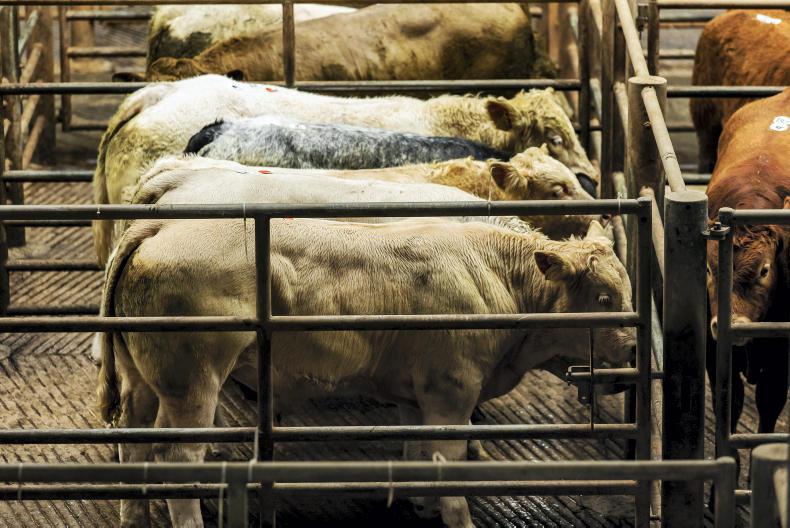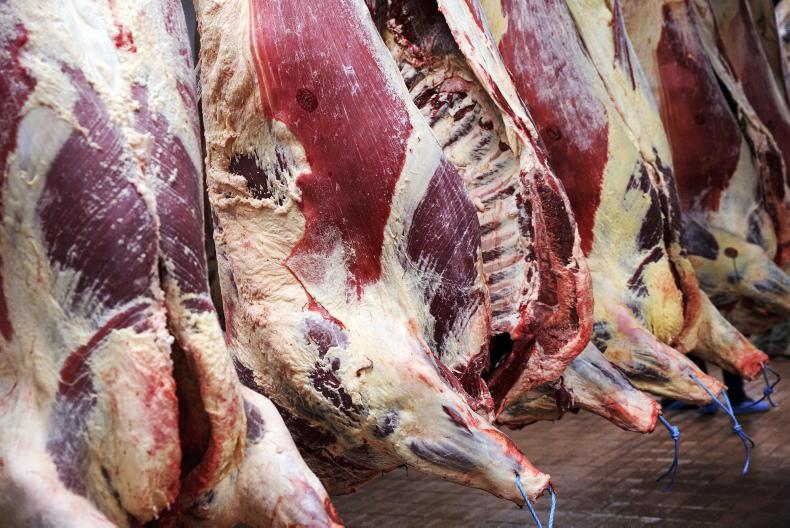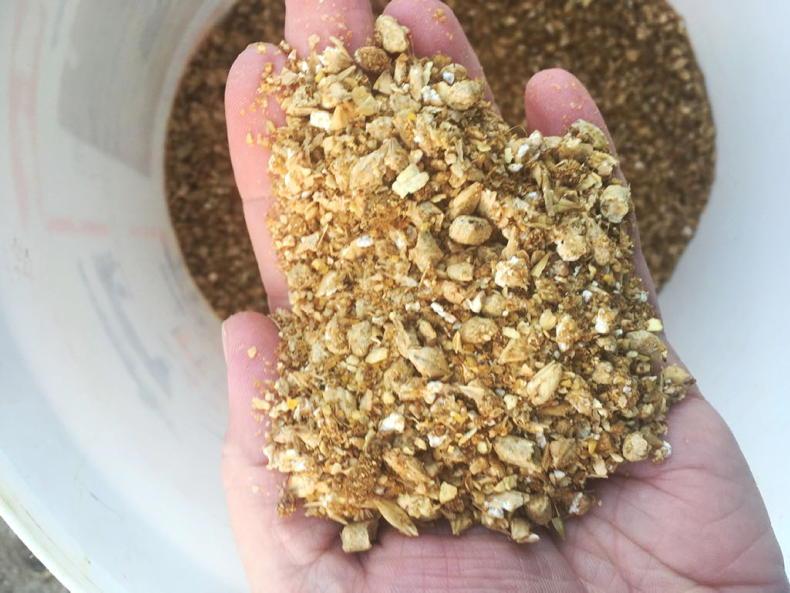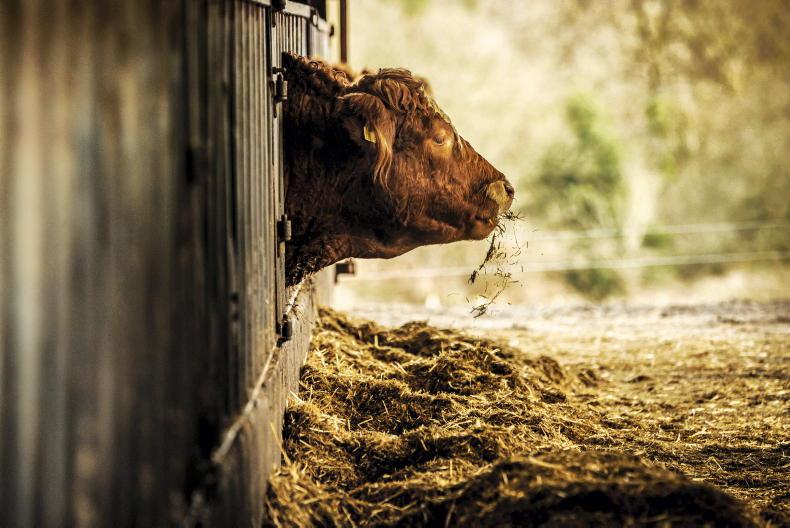Winter-finishing cattle is always a dicey business. For as long as I can remember, budgets were completed in the autumn around the beef price needed to “get out” the following spring.
Prices seldom rise and winter finishers never seem to get the beef price needed to “get out” but by some miracle continue to “get back in” the following autumn and so the cycle continues.
At this time of year, processors will roll out the procurement lads talking positive about the spring beef price.
Phrases like “I think cattle supply will be tight” and “This could be the year to fill the sheds” seem to be enough to instil a small glimmer of hope and off we go again on the winter-finishing merry-go-round.
Spring 2021 could be a game-changer. The implications of a hard Brexit have been well documented at this stage but the consequences of getting in at high store prices and coming out in the aftershock of a hard Brexit could put the lights out for some.
For the last two years, winter finishers have lost somewhere between €150 and €200/head. The beef finisher payment will recoup some of these losses in 2020 but won’t cover them all. This year, above all years, it was never more important to have long, hard discussions with your factory processor. Don’t buy the malarkey about no contracts or no price guarantees. Factories have been working hard to hammer out deals over the last two months.
I can guarantee you that some of the people you are bidding against around the ring either have them in place or are buying using a factory’s money.
Taking 100% of the risk this year is unacceptable and should be out of the question. Factories need to step up to the plate and show farmers, especially winter finishers this year, that they have their back.
Table 1 outlines a steer finishing budget involving the purchase of a spring 2019-born bullock in September 2020 at current prices and finishing out of the shed in March 2021.
It’s important to note that for the two examples below I have used relatively good levels of efficiency and farm performance.
Winter finishing needs high animal performance on a farm where costs are kept in control. Silage quality needs to be high. In the example, silage is 72DMD at 22% dry matter. Ration cost is in at €260/t. Those on a larger scale will be able to purchase ration a lot cheaper.
Ration price
Table 3 outlines the effect that ration price has on the beef price needed to break even.
Animal performance in the steer system is in at 1.1kg/day for the duration that the animal is on the farm. Some farms will be able to achieve higher performance. Animal performance is key. If we compare the steer system with the bull system in Table 2, an extra 0.6kg/day of liveweight gain makes a huge difference in the economics.
It beggars belief how processors have managed to strangle the life out of bull production systems given the ability for farmers to achieve high animal performance, a better chance of a positive margin and with animals slaughtered at a younger age, lower carbon footprint beef.
Total variable costs for the steer system comes in at €480/head. Fixed costs may be on the low side at €65/head but it’s easy to increase if you think it’s appropriate.
Total costs including animal purchase for the steer system come in at €1,725/head, meaning a beef price of €4.32/kg is needed to break even next March. If you add in a €100/head cost to cover your labour, the beef price needed increases to €4.57/kg. If the animal grades a U – and gets the in-spec bonus, that translates into a base price of €4.25/kg needed next March.
Table 2 outlines a bull-finishing budget involving the purchase of a November-born continental weanling and finishing on ad-lib meal under 16 months.
Again, in this example, farm and animal performance is very good with high levels of liveweight gain at 1.7kg/day. Weanling price is €2.57/kg so a top-quality continental weanling is being purchased.
Vet costs are higher in the bull system as a vaccination programme for pneumonia is included. Meal costs are higher due to ad-lib meals being fed. Straw is included to be fed during the ad-lib feeding phase. Liveweight at sale is 678kg with a 59% kill-out, leaving a 400kg carcase, so no cuts for overweight animals.
Total costs come in at €1,635/head, meaning a beef price of €4.08 is needed to break even next February. If a €100/head cost is included to cover labour, the price needed is €4.33/kg. With a €0.12/kg in-spec bonus and if the bull grades a U- , this translates into a base price of €4.09/kg needed next February. Costs are similar in both systems. It’s the bull’s performance and feed conversion efficiency that makes it possible to lower the breaeven price in this system.
Sensitivity analysis: meal price, purchase price and beef price
You could say there isn’t a lot farmers can do about the costs associated with winter finishing. The three big ones are the cost of the store animal or weanling, the cost of the inputs with meal being the big one here and the price that you receive for the finished product. Table 3 outlines the effect that ration price has on the breakeven price. For every €10/t cheaper you can buy meal in the steer system, it’s the equivalent of €0.02/kg beef price. In the bull system ration costs have a bigger impact and a €10/t reduction in price here equates to €0.04/kg in beef price.
Table 4 looks at the effect of animal costs on the system.
This has a large impact on the breakeven price. For every €0.10/kg less, store animals are purchased in the steer system it translates into €0.13/kg in beef price. On the bull side, €0.10/kg higher liveweight costs translates into about €0.11/kg higher price needed at the other end.
The only thing that farmers need to be careful of here is that as lower-quality animals are purchased feed efficiency and carcase grading will decline also, so you need a happy medium.
Table 6 is a little depressing but reflects a system which is struggling to make sense at current beef prices.
To summarise for both systems the base price for these animals needs to be at €4.10/kg next spring for farmers to cover all costs. The advice is to sit down and analyse your own costs. Everybody will be different. Control what you can control and do everything in your power to de-risk the business as much as you can between now and spring 2021.
Brexit threat overshadows winter finishing
At this point, we don’t know what deal or, indeed, if any deal will be in place to replace the EU single market in which Ireland and the UK have operated for 27 years. What we do know is that there will be a return to health certification, customs declarations and inspections as was the case before the single market came into operation in 1993. This will bring a cost, estimated in the UK at up to 10p/kg (11c/kg) on beef. This is inevitable, deal or no deal.
Even if there is a deal, it is expected that it will be a minimal trade deal that means the EU and UK will continue to do business without tariffs or quotas in trade each way. That would allow Irish beef continue on sale in the UK after the 1 January uninterrupted. However, in the medium term, we can expect the UK to conclude a trade deal with both New Zealand and Australia which is almost certain to give them a generous quota to sell their beef on the UK market and in direct competition to Irish beef.
No-deal tariffs make Irish beef unaffordable
If there is no deal and tariffs are applied in the way the UK published them, then Irish beef in the UK market would be prohibitively expensive. In this worst-case scenario, the UK is likely to create some tariff-free quota for imports to avoid serious price inflation. Any such quota would be open to any country including the large South American beef exporters. The bottom line is that after the false starts of the past two years, this winter is when the effects of Brexit will be felt, deal or no deal.
For the last five years, winter beef finishers have not received the beef price required to sustain a viable winter finishing business.Farmers finishing continental steers at 26 months will require a beef price of €4.57/kg next March to cover all costs.Farmers finishing continental bulls at 16 months will require a beef price of €4.33/kg next February to cover all costs.Bull systems require a lower price because of the increased feed conversion efficiency and growth rate.Brexit could have severe consequences on winter finishing with animals coming to finish in the eye of the storm next spring. Read more
Heifers in demand as quotes remain steady
Options for feeding meal to cattle at grass
Over €2.50/kg available for select lots in Carlow
Winter-finishing cattle is always a dicey business. For as long as I can remember, budgets were completed in the autumn around the beef price needed to “get out” the following spring.
Prices seldom rise and winter finishers never seem to get the beef price needed to “get out” but by some miracle continue to “get back in” the following autumn and so the cycle continues.
At this time of year, processors will roll out the procurement lads talking positive about the spring beef price.
Phrases like “I think cattle supply will be tight” and “This could be the year to fill the sheds” seem to be enough to instil a small glimmer of hope and off we go again on the winter-finishing merry-go-round.
Spring 2021 could be a game-changer. The implications of a hard Brexit have been well documented at this stage but the consequences of getting in at high store prices and coming out in the aftershock of a hard Brexit could put the lights out for some.
For the last two years, winter finishers have lost somewhere between €150 and €200/head. The beef finisher payment will recoup some of these losses in 2020 but won’t cover them all. This year, above all years, it was never more important to have long, hard discussions with your factory processor. Don’t buy the malarkey about no contracts or no price guarantees. Factories have been working hard to hammer out deals over the last two months.
I can guarantee you that some of the people you are bidding against around the ring either have them in place or are buying using a factory’s money.
Taking 100% of the risk this year is unacceptable and should be out of the question. Factories need to step up to the plate and show farmers, especially winter finishers this year, that they have their back.
Table 1 outlines a steer finishing budget involving the purchase of a spring 2019-born bullock in September 2020 at current prices and finishing out of the shed in March 2021.
It’s important to note that for the two examples below I have used relatively good levels of efficiency and farm performance.
Winter finishing needs high animal performance on a farm where costs are kept in control. Silage quality needs to be high. In the example, silage is 72DMD at 22% dry matter. Ration cost is in at €260/t. Those on a larger scale will be able to purchase ration a lot cheaper.
Ration price
Table 3 outlines the effect that ration price has on the beef price needed to break even.
Animal performance in the steer system is in at 1.1kg/day for the duration that the animal is on the farm. Some farms will be able to achieve higher performance. Animal performance is key. If we compare the steer system with the bull system in Table 2, an extra 0.6kg/day of liveweight gain makes a huge difference in the economics.
It beggars belief how processors have managed to strangle the life out of bull production systems given the ability for farmers to achieve high animal performance, a better chance of a positive margin and with animals slaughtered at a younger age, lower carbon footprint beef.
Total variable costs for the steer system comes in at €480/head. Fixed costs may be on the low side at €65/head but it’s easy to increase if you think it’s appropriate.
Total costs including animal purchase for the steer system come in at €1,725/head, meaning a beef price of €4.32/kg is needed to break even next March. If you add in a €100/head cost to cover your labour, the beef price needed increases to €4.57/kg. If the animal grades a U – and gets the in-spec bonus, that translates into a base price of €4.25/kg needed next March.
Table 2 outlines a bull-finishing budget involving the purchase of a November-born continental weanling and finishing on ad-lib meal under 16 months.
Again, in this example, farm and animal performance is very good with high levels of liveweight gain at 1.7kg/day. Weanling price is €2.57/kg so a top-quality continental weanling is being purchased.
Vet costs are higher in the bull system as a vaccination programme for pneumonia is included. Meal costs are higher due to ad-lib meals being fed. Straw is included to be fed during the ad-lib feeding phase. Liveweight at sale is 678kg with a 59% kill-out, leaving a 400kg carcase, so no cuts for overweight animals.
Total costs come in at €1,635/head, meaning a beef price of €4.08 is needed to break even next February. If a €100/head cost is included to cover labour, the price needed is €4.33/kg. With a €0.12/kg in-spec bonus and if the bull grades a U- , this translates into a base price of €4.09/kg needed next February. Costs are similar in both systems. It’s the bull’s performance and feed conversion efficiency that makes it possible to lower the breaeven price in this system.
Sensitivity analysis: meal price, purchase price and beef price
You could say there isn’t a lot farmers can do about the costs associated with winter finishing. The three big ones are the cost of the store animal or weanling, the cost of the inputs with meal being the big one here and the price that you receive for the finished product. Table 3 outlines the effect that ration price has on the breakeven price. For every €10/t cheaper you can buy meal in the steer system, it’s the equivalent of €0.02/kg beef price. In the bull system ration costs have a bigger impact and a €10/t reduction in price here equates to €0.04/kg in beef price.
Table 4 looks at the effect of animal costs on the system.
This has a large impact on the breakeven price. For every €0.10/kg less, store animals are purchased in the steer system it translates into €0.13/kg in beef price. On the bull side, €0.10/kg higher liveweight costs translates into about €0.11/kg higher price needed at the other end.
The only thing that farmers need to be careful of here is that as lower-quality animals are purchased feed efficiency and carcase grading will decline also, so you need a happy medium.
Table 6 is a little depressing but reflects a system which is struggling to make sense at current beef prices.
To summarise for both systems the base price for these animals needs to be at €4.10/kg next spring for farmers to cover all costs. The advice is to sit down and analyse your own costs. Everybody will be different. Control what you can control and do everything in your power to de-risk the business as much as you can between now and spring 2021.
Brexit threat overshadows winter finishing
At this point, we don’t know what deal or, indeed, if any deal will be in place to replace the EU single market in which Ireland and the UK have operated for 27 years. What we do know is that there will be a return to health certification, customs declarations and inspections as was the case before the single market came into operation in 1993. This will bring a cost, estimated in the UK at up to 10p/kg (11c/kg) on beef. This is inevitable, deal or no deal.
Even if there is a deal, it is expected that it will be a minimal trade deal that means the EU and UK will continue to do business without tariffs or quotas in trade each way. That would allow Irish beef continue on sale in the UK after the 1 January uninterrupted. However, in the medium term, we can expect the UK to conclude a trade deal with both New Zealand and Australia which is almost certain to give them a generous quota to sell their beef on the UK market and in direct competition to Irish beef.
No-deal tariffs make Irish beef unaffordable
If there is no deal and tariffs are applied in the way the UK published them, then Irish beef in the UK market would be prohibitively expensive. In this worst-case scenario, the UK is likely to create some tariff-free quota for imports to avoid serious price inflation. Any such quota would be open to any country including the large South American beef exporters. The bottom line is that after the false starts of the past two years, this winter is when the effects of Brexit will be felt, deal or no deal.
For the last five years, winter beef finishers have not received the beef price required to sustain a viable winter finishing business.Farmers finishing continental steers at 26 months will require a beef price of €4.57/kg next March to cover all costs.Farmers finishing continental bulls at 16 months will require a beef price of €4.33/kg next February to cover all costs.Bull systems require a lower price because of the increased feed conversion efficiency and growth rate.Brexit could have severe consequences on winter finishing with animals coming to finish in the eye of the storm next spring. Read more
Heifers in demand as quotes remain steady
Options for feeding meal to cattle at grass
Over €2.50/kg available for select lots in Carlow










SHARING OPTIONS